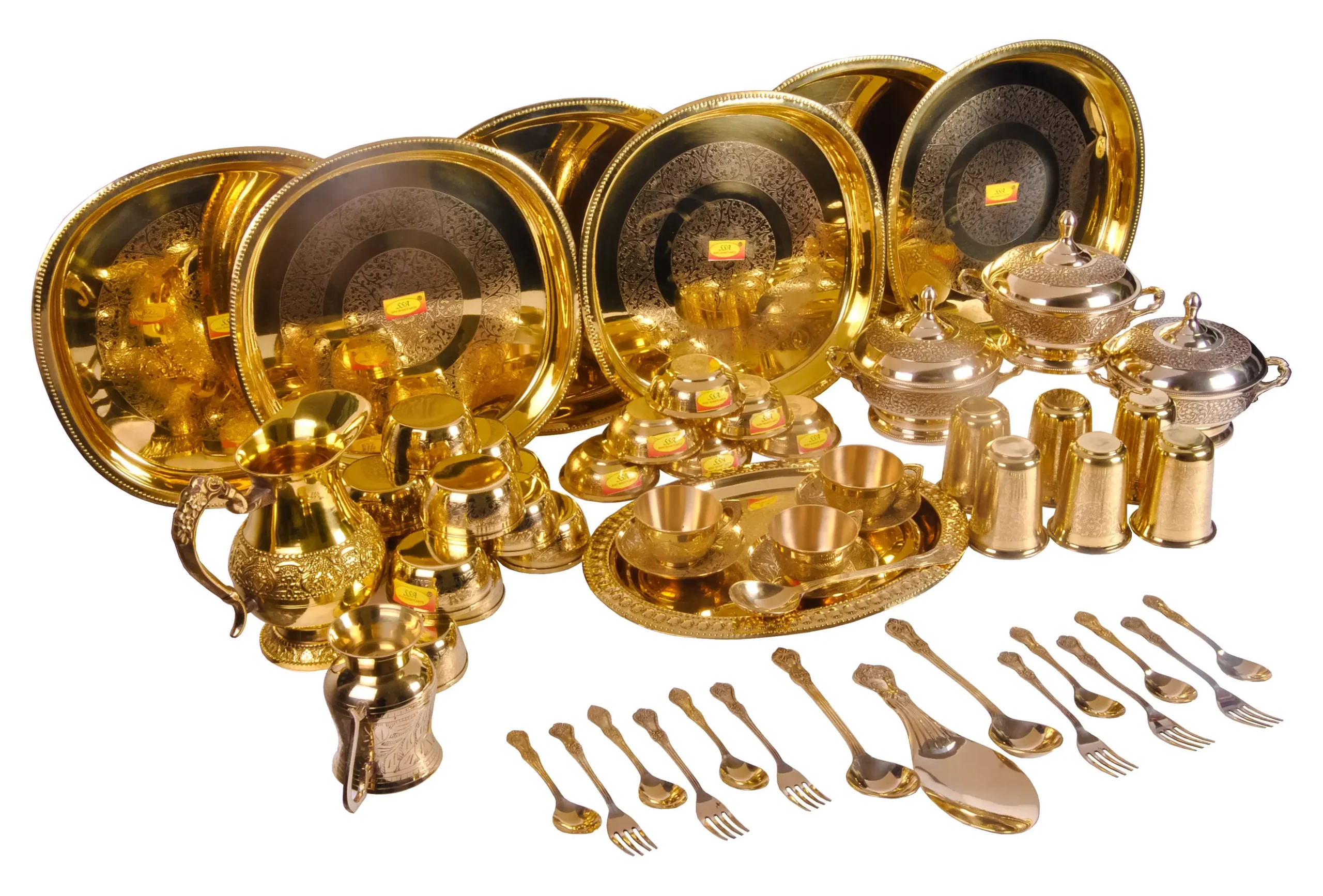Stainless Steel Plated Brass: Benefits and Applications Explained
Stainless steel plated brass is a composite material that combines the advantages of brass and stainless steel. This material is widely used in various industries due to its strong mechanical properties, good corrosion resistance and good aesthetics.
This article details the characteristics, manufacturing process, applications and advantages of stainless steel plated brass.
1.What is stainless steel plated brass?
Stainless steel plated brass is a composite material that is plated with a layer of stainless steel on the surface of a brass substrate. This plating process combines the strength, corrosion resistance and aesthetics of stainless steel with the cost-effectiveness and machinability of brass. The result is a durable, beautiful material that is often used in applications that require both functionality and a polished appearance, such as hardware, plumbing fixtures and decorative items.
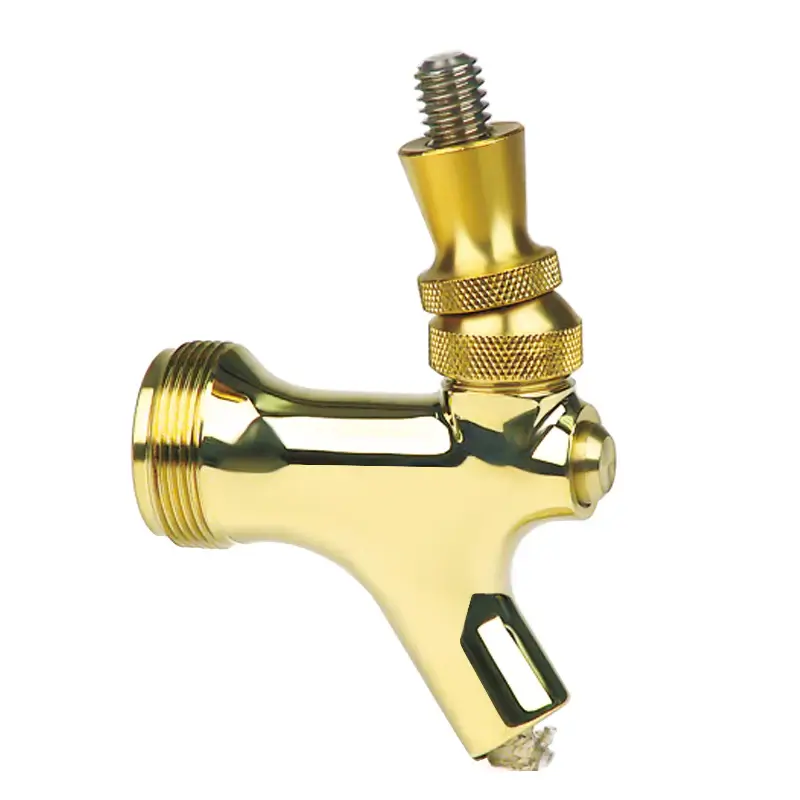
2.Composition and Manufacturing Process
1) Brass
Brass is an alloy composed primarily of copper and zinc, with different proportions of the two to achieve different mechanical and chemical properties. Typically, brass is composed of 60-70% copper and 30-40% zinc. The addition of other elements, such as lead, tin, and aluminum, further enhances its properties.
2) Stainless Steel Plating
Stainless steel is an iron-based alloy with a minimum of 10.5% chromium that provides excellent corrosion resistance. Other alloying elements, such as nickel, molybdenum, and manganese, may be added to enhance strength, toughness, and specific properties such as resistance to pitting and crevice corrosion.
3) Stainless Steel Plating Process
The process involves depositing a thin layer of stainless steel onto a brass substrate. This can be achieved by a variety of methods, including:
- Electroplating: An electrolytic process in which a brass part is immersed in an electrolyte solution containing stainless steel ions. An electric current is applied, causing the stainless steel ions to be deposited on the brass surface.
- Physical Vapor Deposition (PVD): A vacuum process in which stainless steel is evaporated and then condensed onto a brass substrate to form a thin, uniform coating.
- Chemical Vapor Deposition (CVD): A process in which gaseous reactants form a solid stainless steel coating on a brass substrate through a chemical reaction.
The manufacturing process generally involves the following steps:
- Preparation of the brass substrate: The brass substrate is cleaned and polished to remove any impurities and ensure a smooth electroplated surface.
- Electroplating: The brass substrate is immersed in an electrolyte containing stainless steel ions and an electric current is passed through it, causing the stainless steel ions to be deposited on the brass surface to form a thin and uniform coating.
- Post-plating treatment: The plated brass can undergo additional treatments such as polishing, annealing, or coating to enhance its performance and appearance.
3.Characteristics of stainless steel plated brass
Stainless steel plated brass has a unique set of properties derived from its composite nature. The following are the main characteristics of stainless steel plated brass:
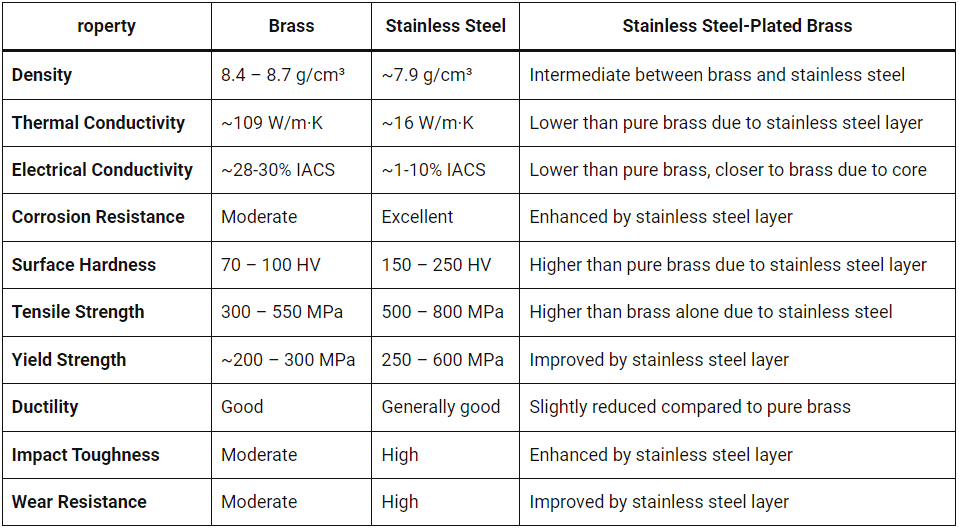
4.Applications of stainless steel plated brass
Stainless steel plated brass is a versatile material that can be widely used in various industries due to its unique combination of properties. The following are some key areas where this composite material is commonly used:
1) Sanitary equipment
Stainless steel plated brass is often used in plumbing fixtures due to its durability, corrosion resistance, and aesthetics. The stainless steel layer enhances the ability to resist water and chemicals, while the brass core provides the necessary strength and machinability.
Product examples include:
- Faucets
- Valves
- Showerheads
- Fittings
- Toilet tank levers
- Shower controllers
2) Decorative hardware
The material’s aesthetics and sturdiness make it a popular choice for decorative hardware. The stainless steel plating provides a sleek, modern look while protecting the brass core from environmental wear and tear.
Product examples include:
- Door handles
- Cabinet handles
- Drawer pulls
- Architectural trim
- Hinges
- Trim
3) Electrical components
In the world of electrical components, stainless steel plated brass combines conductivity with protection. The material’s electrical and mechanical properties make it suitable for a variety of critical applications.
Product examples include:
- Connectors
- Terminals
- Switchgear components
- Relays
- Appliance housings
- Circuit breakers
4) Jewelry and accessories
In the jewelry and fashion accessories industries, stainless steel plated brass is favored for its cost-effectiveness and visual appeal. The stainless steel layer provides a durable yet stylish finish.
Product examples include:
- Necklaces
- Bracelets
- Earrings
- Rings
- Watches
- Brooches
5) Industrial Components
Stainless steel plated brass is used in industrial applications where a combination of mechanical strength and resistance to harsh conditions is critical. The material’s properties determine its performance in demanding environments.
Product examples include:
- Mechanical parts
- Precision instruments
- Gaskets and seals
- Fasteners
- Hydraulic fittings
- Pumps
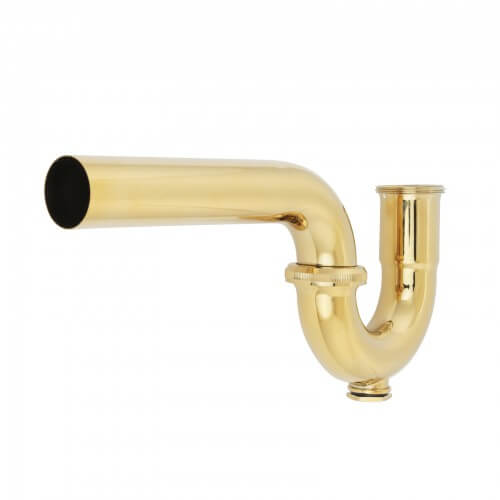
5.Advantages of stainless steel plated brass
Advantages of stainless steel plated brass include:
- Corrosion resistance: The stainless steel layer has excellent resistance to rust and corrosion, enhancing the durability of brass.
- Aesthetic appeal: Stainless steel plating gives brass a polished, high-quality appearance, making it suitable for decorative and high-visibility applications.
- Strength and durability: Stainless steel increases the strength and toughness of the brass substrate, improving its overall mechanical properties.
- Cost-effective: In some applications, it is more economical to combine stainless steel with brass than to use solid stainless steel.
While stainless steel plated brass has many advantages, there are some potential disadvantages:
- Wear of the plating: Over time, the stainless steel layer may wear or become damaged, which may expose the brass underneath.
- Plating cost: The electroplating process adds initial cost, which may be higher than using plain brass.
- Maintenance: Although corrosion resistant, stainless steel plated brass may require maintenance to keep it looking and performing at its best.
6.Which metals should not be used with stainless steel?
Certain metals should not be in direct contact with stainless steel to avoid electrochemical corrosion, which occurs when dissimilar metals are electrically connected in the presence of an electrolyte.
1) Aluminum: Can cause rapid corrosion of stainless steel
To prevent corrosion problems, compatible materials must be used or a protective coating must be applied when combining the metals.
2) Brass and steel will corrode together
Brass and steel will corrode when used together, primarily due to electrochemical corrosion. When brass and steel come into contact, especially when wet, a galvanic cell forms, causing the less noble metal to corrode faster. Steel is more anodic than brass and is more susceptible to corrosion. To prevent this, use coatings, washers, or insulating materials to separate the metals and reduce the risk of corrosion.
3) What are the enemies of stainless steel?
The main enemy of stainless steel is chlorides. Chlorides are commonly found in salt water, de-icing salts, and certain chemicals, and can cause pitting and crevice corrosion in stainless steel. Exposure to high chloride environments can compromise the corrosion resistance of stainless steel, causing localized damage. To protect stainless steel, it is important to minimize exposure to chlorides and use the appropriate grade and protection.
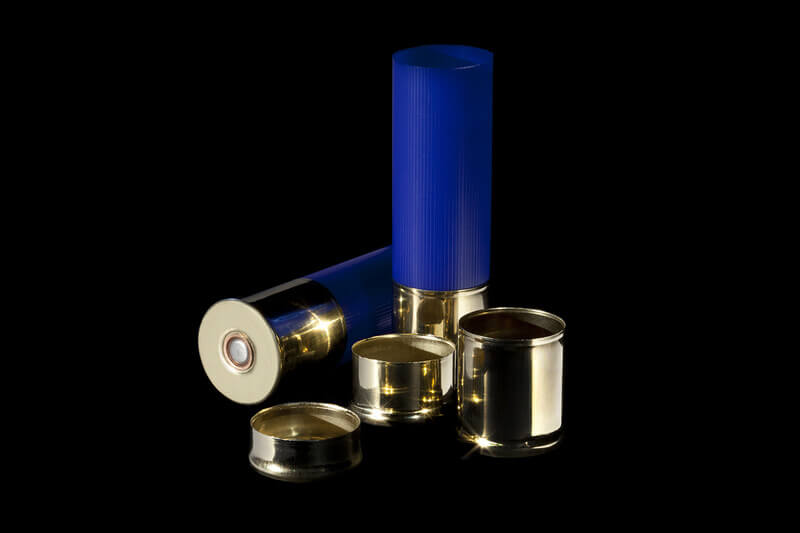
7.How to coat stainless steel with brass?
To coat stainless steel with brass, follow these general steps:
- Surface preparation: Clean the stainless steel surface thoroughly to remove any dirt, grease, or oxides. This ensures that the brass coating adheres better.
- Surface activation: Apply a chemical treatment to activate the stainless steel surface, enhancing the adhesion of the brass layer. This may involve acid etching or other surface activation methods.
- Brass Plating: A thin layer of brass is applied to stainless steel using an electroplating process. This involves immersing the stainless steel in a solution containing brass salts and passing an electric current through it, causing brass ions to attach to the surface.
- Rinse and Dry: After electroplating, rinse the coated stainless steel to remove any residual chemicals and dry thoroughly.
- Finishing: Apply any additional treatments or coatings to protect the brass layer and achieve the desired appearance and durability.
This process enhances the beauty and corrosion resistance of the stainless steel part.
8.Do Brass and Stainless Steel Tarnish?
Yes, both brass and stainless steel tarnish, although in different ways:
- Brass: Brass tarnishes over time due to oxidation and exposure to air and moisture. It typically forms a dull, discolored layer that can be cleaned or polished.
- Stainless Steel: Stainless steel is less susceptible to tarnishing because it contains chromium, which forms a protective layer. However, stainless steel can still tarnish or stain, especially when exposed to harsh chemicals or environments.
Regular cleaning and maintenance can help prevent tarnish and preserve the appearance of both materials.
9.How to prevent galvanic corrosion between brass and stainless steel?
To prevent galvanic corrosion between brass and stainless steel, consider the following strategies:
- Use a non-conductive barrier: Install insulating materials, such as washers or coatings, between the brass and stainless steel to prevent direct contact.
- Apply a protective coating: Use a coating or paint on the surface to isolate it from environmental factors that may cause corrosion.
- Choose compatible materials: Choose materials that are not prone to galvanic corrosion, or use brass and stainless steel in applications where contact is minimal.
- Regular maintenance: Regularly inspect and maintain components to ensure that protective measures remain effective and address any signs of corrosion promptly.
- Control the environment: Minimize exposure to moisture, salt, and other corrosive elements that may accelerate galvanic corrosion.
These measures can help reduce the risk of galvanic corrosion and extend the life of components.
10.Conclusion
Stainless steel plated brass is a versatile material that combines the advantages of both brass and stainless steel. Its unique combination of corrosion resistance, mechanical strength, and aesthetics make it suitable for a wide range of applications, from plumbing and decorative hardware to electrical components and jewelry. Understanding the properties and benefits of this composite material can help make informed decisions about its use and further innovate its applications.
By carefully considering the specific requirements of each application, engineers and designers can take full advantage of the benefits of brass plating on stainless steel, ensuring the performance, durability, and visual appeal of their products.
